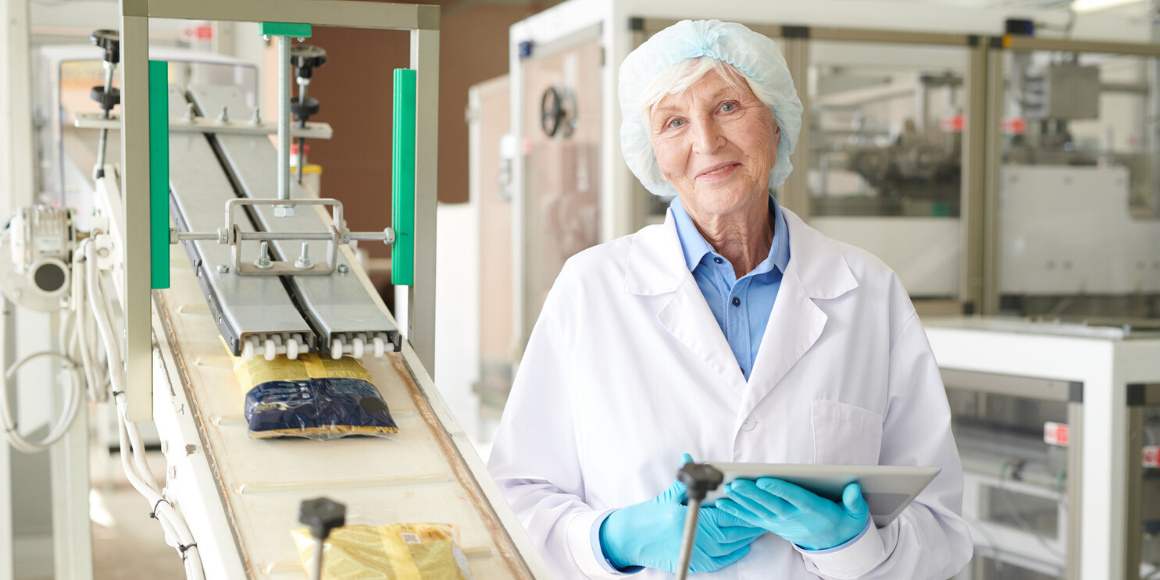Managing a packaging operation holds unique challenges as well as opportunities for food processors. A manufacturer's bagging operation not only must function efficiently but also is the point in the process where the product quality, shelf life, transport competence, and retail appearance come together to create the customer-facing sales unit.
The Importance of Measuring OEE for Bagging Operations
Today's coronavirus (COVID-19) crisis has created a spike in demand for food products of all kinds. Producers everywhere are meeting this challenge by utilizing Smart Factory analytics. Measuring OEE and analyzing its underlying components is giving companies the information they need to find ways to increase production throughput.
Because bagging is so critical to an operation's overall performance, tracking the bagging operation's OEE is an essential component of maintaining overall plant productivity. Bagging problems such as micro-stops or broken bags requiring extensive clean-up can adversely affect the performance of the entire plant.
All of these problems and others cause lower values from OEE calculations. Thus, by carefully tracking OEE scores, a manager can monitor line performance. Problems can be noted, and corrective action can be taken. For effective management of the bagging operation, both OEE and its components should be analyzed.
Availability
The OEE calculation includes a value for “availability.” This value equals run time divided by planned production time, where run time equals planned production time less stops. Total “stop” time can be significant for bagging operations.
Packaging materials such as plastics, mylar, and paper are flexible and affected by environmental factors such as temperature and humidity. As a result, jamming, misalignment, and improper sealing can occur, even if machine settings are accurate.
Automatic data gathering using electronic devices such as Worximity's TileConnect sensors are needed to capture all stops and delays. These sensors are fastened to production equipment and record every stop, yielding useful and accurate results. At Worximity Technology, we produce comprehensive OEE monitoring software as part of our Smart Factory analytics performance monitoring systems.
Performance
A second important factor in OEE calculation is a value for “performance.” Performance measures the “speed” of production and is calculated by first calculating a value for ideal cycle time multiplied by total count. This value is then divided by process run time. If a bagging machine slows down or stops, this will negatively impact the line's performance score and, ultimately, the OEE figure.
Quality
The final value used in the OEE calculation is a value for “quality.” Quality is calculated by dividing the total number of good units produced (a good unit is a unit produced that meets specification and needs no rework) by the total number of units produced (including good units, rejects, and reworks).
Problems such as improperly sealed bags or incorrect fill amounts reduce the number of good units passing through the bagging operation and lower the OEE. By watching the quality component of OEE, a manager can ensure the process is producing the maximum possible number of good units.
Mistakes That Should Be Avoided When Calculating OEE
OEE is a powerful and extremely valuable tool when used correctly. Mistakes using OEE are commonplace, however, and the following should be avoided.
Comparing Dissimilar Operations
Comparisons between OEE values for dissimilar operations can be misleading because process operating characteristics are different, resulting in OEE differences.
Not Analyzing the Components Making up OEE
To understand the root causes of OEE changes, analysis of the individual components (availability, performance, and quality) is necessary. The underlying components can be the basis for root cause analysis and the development of improvement action items.
Not Involving the Operators
If line operators are not involved in implementing OEE, they may feel the measure is a “club” to hit them over the head so they will improve performance. By involving operators early, these attitudes can be avoided.
Trying to Calculate OEE with a Paper-Based System
Historically, paper-based systems were used to gather data and calculate OEE. The difficulty with this approach is that relevant information is often not captured and reported. Today, real-time data collection and analysis systems are available, such as Worximity's Smart Factory analytics.
Worximity Technology is the leading supplier of advanced production monitoring systems. With its TileConnect data collection sensors and cloud-based real-time analysis, Worximity's Smart Factory analytics software provides managers with up-to-the-minute OEE and other KPI values.
To learn how Worximity's systems can help your company be more profitable with less downtime and increased throughput, download a free copy of Worximity's Smart Factory Analytics e-book. Then, schedule a free demo and see how real-time OEE analysis can help you not only meet the challenges of COVID-19 but also drive profits and market share.







